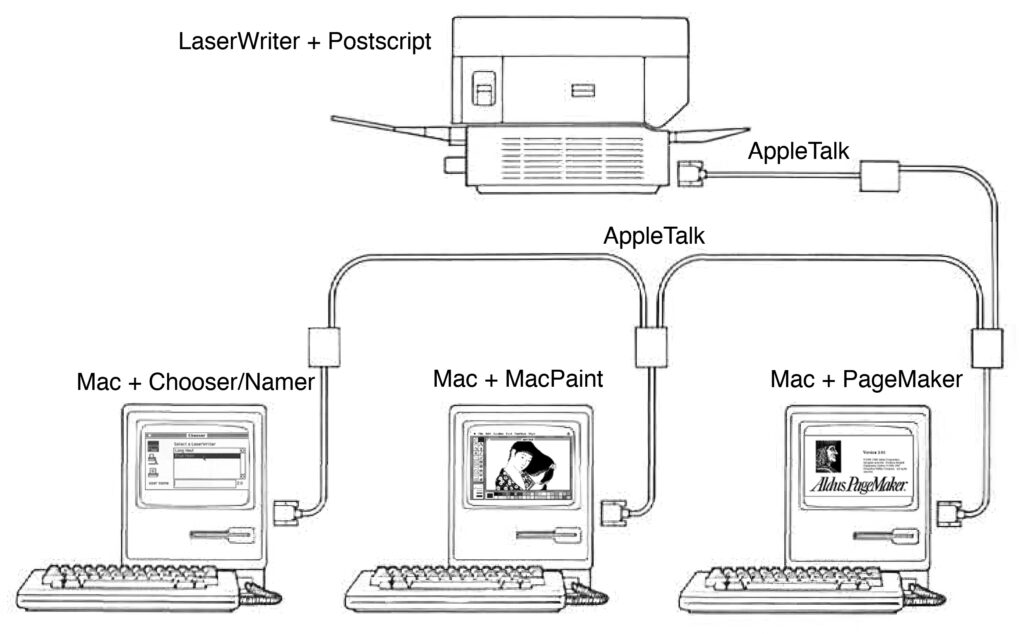
There was one additional important piece to the upcoming desktop publishing revolution.
The combination of the Mac, LaserWriter, Postscript and AppleTalk let Mac users easily print, in very high quality, anything they could create and view on the Macintosh screen. But, as revolutionary as the Macintosh was, its 9-inch screen was black-and-white with a resolution of 512 x 342 pixels at 72 dots per inch (dpi). “Print quality” needed to be full page and at least 300 dpi.
Postscript could take the Mac’s 72 dpi and “extrapolate” it to the LaserWriter’s 300, but if you wanted to tune details beyond what could be done on the Mac’s screen, you needed an additional application (they weren’t called “apps” yet). Enter Aldus PageMaker.
PageMaker was a page layout application which took advantage of Postscript to let Mac users fully design and lay out individual pages, which were then sent over to the LaserWriter through AppleTalk.
At the time (early 1985) the Macintosh operating system, and the associated LaserWriter “print driver” could only print standard Mac graphic files (like those created by MacPaint). There was no ability to take “raw” Postscript and send it out to a printer. So Alan worked to give developers like Aldus direct access to AppleTalk, which is how early versions of PageMaker were able to “speak” Postscript directly to the LaserWriter.
Desktop Publishing: Macintosh + LaserWriter + Postscript + AppleTalk + PageMaker. That was the formula. The rest is history.
